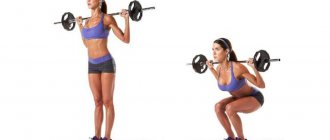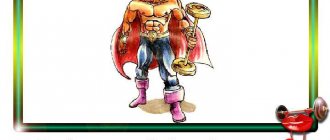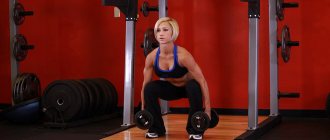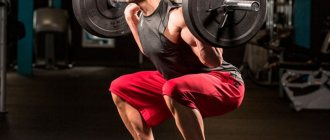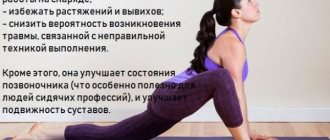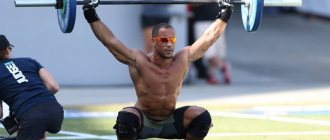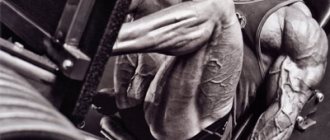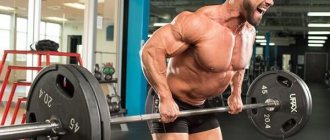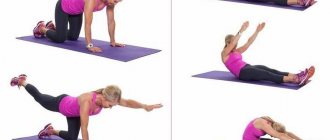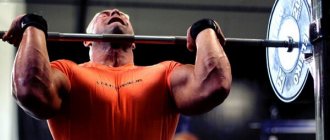Squats are one of the few effective exercises for working almost every major muscle group, including the quadriceps, hamstrings, glutes, back and calves, when done correctly.
Learning proper squat technique comes down to ingraining a few simple skills and following a few effective tips (which you'll learn next).
The back squat is the most widely used and highly prized form, but variations such as front squats, goblet squats, and Bulgarian split squats can be equally effective.
According to bodybuilding theorists, if you don't squat, you're making a big mistake.
Of course, you can tone your legs without squatting (there are many other exercises you can do to train your quads, hamstrings, glutes, and calves), but the reason the barbell squat is the sole leader is because it is the most hard exercise.
It requires almost every major muscle group in your body to work together (coordinated) to create enormous force, as well as near-perfect form if you're ever going to squat any significant weight.
You can cheat on the bench press and even the deadlift and end up lifting heavy weights, just not on the squat.
If you do not have sufficient strength and technique, you will not succeed in this exercise.
It's also one of the best compound exercises for developing every major muscle group in your body, from tip to toe.
By the end of the article, you'll learn how to squat with near-perfect form, the best variations, 12 ways to improve your classic squat, and a simple but hard, effective workout to boot.
What muscles work when squatting?
The squat is a unique exercise that works almost every major muscle group, including the arms, chest, and shoulders.
In particular, it helps you develop:
- quadriceps femoris muscle (quadriceps);
- gluteal muscles;
- hip flexor and extensor muscles;
- latissimus dorsi muscle;
- trapezoid;
- calf muscles.
As you probably know, most muscles in the body have antagonists - muscles that are opposite in action, that is, when the muscle is active, the opposite one relaxes.
For example, when you curl a barbell with your biceps, your triceps are relatively inactive. And when pressing with a narrow grip, the triceps work, but the biceps are practically not.
The quadriceps and hamstrings have a similar relationship, but thanks to a quirk of human anatomy called Lombard's Paradox, the squat is able to engage both of these muscles at the same time. This is one of the reasons they are so effective (and complex).
Barbell squat technique
Squats are the most useful and effective for gaining muscle mass and strength, but at the same time they require good technique, otherwise they can become dangerous.
So let's figure out how to squat step by step.
Let's look at the three steps to proper squat form, starting with preparation.
Preparation
Proper preparation comes down to several points:
Set the height on the frame (stand); Place the bar on the frame; Grab the bar; Remove the projectile from the rack; Positioning the legs.
Let's take a closer look at each of these points.
Rack height
First of all, make sure that the stand is not too high or too low.
You should be able to remove the bar without sitting under it or standing up on your toes.
This is approximately 3-5 cm below the final height of the bar when you stand up, or approximately at the top of the sternum.
Experiment with an empty bar to determine the height you need.
There are two ways:
- High position;
- Low position.
squats high low Both methods have pros and cons, but the differences are minor and ultimately you should do what works best for you.
Low position. In a low squat, the bar is positioned in the middle of the trapezius and rear delts, as in the picture above.
The benefits of this method are that it allows you to lift a little more weight, it engages more of your hamstrings, and it generally feels safer. Therefore, many people (new to the gym) prefer this method.
The downside is that it doesn't allow you to squat as deep as a high barbell position, and this can cause shoulder pain, especially if you squat several times a week.
High position. The bar is located at the top of the trapezoid, as in the picture above.
The benefits are that it allows you to reach more depth, it puts a bit of stress on the quads, and it doesn't impact the shoulders as much.
This is why advanced powerlifters and weightlifters train high and squat low in competition to lift maximum weight.
The disadvantages are that most people cannot squat heavy weights with a high barbell position, it requires more developed upper back muscles, and the technique is more difficult for beginners.
So which one should you choose?
It mostly comes down to personal preference.
You need to choose any one that is more convenient for you. For most people this will be a low position, at least at first, but try both and decide for yourself.
One thing to remember:
When you squat with a high barbell position, make sure the bar is on your trapezius and not on your spine. This is a common mistake, especially for people with small traps, and is the main reason why people feel the need to use pads (wrapping a towel around the bar).
A thumbless grip allows you to keep your wrists straight, especially when doing low squats. A full grip makes it easier to control the barbell and allows you to keep your hands closer together.
So which one should you choose? Use whichever one feels more comfortable.
Whichever you choose, try to grab the barbell as close to your shoulders as possible.
Some people also say that the wrists should only be straight, but this is not necessary. In any case, the weight of the barbell falls almost entirely on your back. Therefore, if you slightly change the position of your wrists to make it more comfortable, this is absolutely normal.
The truth about barbell squats and their safety
Unless you suffer from a chronic illness/injury that prevents traditional barbell squats, there is no reason to avoid this basic movement. Especially if you really want to develop a strong and powerful lower half of your body (or your entire body for that matter).
To avoid injury during barbell squats, you simply need to do four things:
- It's good to warm up
- Spend time honing proper technique
- Use a feasible working weight
- Enlist the support of the insurer in case of failure
If you're really concerned about your health, take extra precautions and buy knee pads that will protect your joints, a belt that will help stabilize your spine, and even special "squat shoes" that many companies make.
Removing the rod from the frame
Place your feet directly under the bar (not behind), take a deep breath, grab the bar, lift your chest, and lift the bar off the rack.
Take one step back with each foot, making sure you're planted firmly on one foot before you step.
Don't take many small steps back. This wastes energy and forces you to move further, and forces you to walk a long distance at the end of the approach, which can be unsafe.
Leg position
In order to determine the ideal width of your feet, you will have to experiment. To start, position your feet slightly wider than your shoulders:
leg placement
If you want to give more load to your buttocks, then a wide position of the legs is more suitable, but not too wide (so that the execution is comfortable). Remember, you can always work your glutes with other exercises.
If you fall back while doing the exercise, try placing your feet 3-5 cm wider. If you feel tension and compression in your hips in the lower position, try placing your feet 3-5 cm wider.
It is important to pay attention to several points:
- The bar should move in a straight line up and down (not lean back and forth).
- The back remains straight (do not bend).
- Knees point towards the big toes.
- Elbows remain in place.
- The head is in line with the back.
{banner_st-d-2} Now in more detail:
First, take a deep breath, drawing air into your stomach. When you inhale, you should feel your belly expanding, not your chest.
Then press your tongue into the upper palate to close the trachea. Tighten your torso muscles as if preparing for a punch to the stomach.
Squeeze the bar as tightly as possible, open your chest and squat down, keeping your knees in line with your feet and leaning slightly forward.
In this case, you need to make sure that your knees do not converge with each other.
To avoid this during squats, think about the fact that you are pushing the floor apart with your feet.
Let's look at one of the most controversial issues in squats:
How deep do you squat?
There is a short answer to this: below the “parallel”.
This means that the hip joint is below the top of your knees, and the femur bone is parallel to the ground (or slightly below), like this: below parallel.
Anyone who's spent any time in the gym knows that most people don't get anywhere close to parallel during squats, meaning the most beneficial part of the exercise is lost.
Because the deeper you squat, the:
- greater strength and muscle mass as a result;
- the buttocks are better developed;
- the hips take the pressure off your knees;
- The lower back becomes stronger.
So, it's pretty clear that quarter and half squats are inferior in every way. And including them in numerous training programs without the correct technique is of little use.
Does this mean you should touch the ground with your buttocks? Not necessary. The full squat requires more joint mobility than most people, and it can be especially difficult for people with long thighs or torsos. However, if you can squat fully, it can provide additional strength and muscle building benefits.
What if you can’t even squat down to parallel?
Do not worry. Do your best to achieve parallel every time you squat, work on improving your joint mobility and it will come over time.
Climb
You have to focus on one word: tension.
One of the most common mistakes people make while lifting is relaxing a part of their body (upper back, abs, or grip of the bar).
You are only as strong as your weakest link. When one part of the body stops working at its full capacity, it becomes more difficult to complete the exercise.
For example, if you relax your upper back and chest halfway through a heavy rep, you will lose speed and likely end up leaning forward. Therefore, other muscles will be forced to work even harder to align, and if they fail, the set will simply end.
That's why most tips to help you rise encourage you to stay on your toes.
For example, here are some helpful tips to keep things on your toes:
Fire upward sharply after reaching the desired squat depth.
Move during the lift as if you were trying to throw the barbell off your back. This will help speed up the rise.
Imagine that you are pushing the floor apart with your legs. Guide your hips under the bar.
You may have noticed that there is a point just above parallel where, as you lift, the weight suddenly becomes much heavier and the speed begins to slow down. (If this makes you feel better, know that it happens to all elite powerlifters).
The keys to getting past this point are to start the lift with an explosive movement, hold air in your lungs, and drive your hips powerfully under your body.
Before we move on, let's look at a common problem people have when lifting: rounding the back.{banner_st-d-1}
How to keep your back straight
Many people have trouble keeping their back straight when lifting, and it ends up looking like this:
squat is impossible Some say that this is due to weakness of the core muscles. While this is certainly one factor, there are more reasons than meets the eye.
One of the main reasons is that they lift the buttocks faster than the chest.
Why is this happening? The main reason is that the barbell is too heavy.
There are several ways to fix this:
use lighter weights until you can complete all reps with correct form at any point in the squat;
keep your back as tense as possible. Many athletes don't think about their legs while squatting. Instead, they focus on keeping their chest position the same and pressing the bar into their back as if they were trying to bend it in half.
Imagine that you are trying to throw the bar off your back and forcefully drive your hips under the bar. (This is one of the best tips for those who want to squat heavy weights with proper form).
Strengthen your quads with lots of squats and assistance exercises.
breathe correctly. Inhale enough air to fill your lungs to about 80%, and hold it for the entire repetition (one squat). Many people let air out of their lungs when they rise. And this makes it very difficult to keep your back straight and tense.
We discussed in some detail the technique of performing one of the key exercises in weightlifting, bodybuilding, and powerlifting. In the second part of this note, we will look at other types of squats and 12 ways to improve your results.
Squat Variations
Barbell squats can be performed in various variations. Additional equipment and a different way of holding the barbell can be used for the exercise. There are different types of squats in this complex.
On a chair
- Squats with a barbell on a chair help you learn to feel the bottom point of the exercise.
- The main thing is to choose furniture of the right height.
- For this you can use not only a chair, but also a sports bench.
- It is important to maintain concentration and attention and not lower your body too sharply.
- Sudden falls can cause impacts and damage to the spine due to the compression effect.
- For these reasons, this type of squat is used more as a training or corrective technique, rather than as a main one.
Near the wall
- Wall squats are performed without a barbell, since it will not be possible to hold it due to the peculiarity of the body position.
- To increase the load, you can take one heavy plate and hold it with both hands near your chest.
- Wall squats are more difficult than usual, since you have to strain extra to maintain balance when moving along one vertical axis.
- The athlete places his feet shoulder-width apart and presses his back against the wall.
- You need to lower yourself to a right angle at the knee joints.
- At the bottom point, the body position is fixed, giving additional load to the quadriceps, and only after that can you rise.
With narrow feet
- This type of squat differs from the classic one only in the location of the legs.
- The feet are placed narrower than shoulder width.
- When performing the complex, most of the load remains on the quadriceps, and the back part works as an auxiliary one.
- This is due to the fact that with such a position of the legs it is impossible to lower to the maximum classic point.
- The amplitude decreases, and, accordingly, the load on the back of the thigh.
- But thanks to this, the load on the quadriceps femoris muscle increases.
- The body position in this complex is no different from the classic squat - the back is straight, the heels are inseparable from the floor.
In the Smith machine
- When using a Smith machine, the barbell is pre-set to a comfortable height position.
- It should be slightly below the shoulders, so that it is comfortable to fit under it.
- You need to take the bar slightly wider than your shoulders and also spread your legs.
- The back remains perpendicular to the floor, and the pelvis is moved slightly back.
- During a squat, the pelvis is pulled back even more, and the body is lowered just below the parallel of the hips with the floor.
- At the bottom point, you need to make an effort and push your body, returning it to its original position.
- During the entire exercise, the back remains straight, does not bend or round.
Frontal
- When performing this type of exercise, the barbell is positioned on the front delts.
- In this complex, the pectoral muscles and abs are more strongly involved.
- Front deep squats are best performed by experienced athletes, as this technique is a little more complicated.
- During squats, your arms hold the bar straight and your elbows are forward.
- At the same time, the wrist is bent towards the athlete so that the palms seem to be looking up.
- When lowering the body, the chest moves forward.
- Due to this arrangement of the bar, part of the load is removed from the back and lumbar region, minimizing the risk of damage to the knee joints.
- The depth is determined independently, but the most effective is to completely lower it until the back of the thigh and calf muscles touch.
Sumo with barbell (plie)
- The plie or sumo exercise got its name due to the similarity with these names.
- When performing this squat, the legs are placed as wide as possible.
- Performing this complex allows you to work on a rather problematic area - the inner surface of the thigh.
- It is technically more complex than classic squats, so it is recommended that you begin it after mastering the basic technique.
With a barbell overhead
- Due to this arrangement of the load, the load on the body and shoulder girdle increases.
- When holding the barbell above your head, you need to keep your arms straight. The grip on the bar should be wide enough.
- When lowering down, the pelvis is moved back, while the back does not change position and remains as supine as possible.
- When lowering to the lowest point, the athlete pushes himself out with the strength of his hips and buttocks, returning to the starting position.
- In such a complex, it is especially important to maintain concentration and avoid swinging. Otherwise, if you lose your balance, you can get injured and simply fall.
Three popular squat variations
Back squats are the best leg exercise, but they are far from the only one.
Let's look at three variations that are worth knowing and that can be used instead of or in addition to the classic version with a barbell on the back:
- Frontal.
- Bulgarian split.
- Goblet squats.
- Front Squats
From the waist to the feet, they are no different from the classic ones. The key difference is that the barbell is held on the shoulders rather than on the back.
This is what it looks like:
The main advantage of front squats is that they place even more emphasis on the quadriceps and upper back and allow you to squat deeper than with the classic low bar position. In addition, they reduce the load on the knees and lower back, which makes them ideal for people who have any problems with the joints.
The disadvantage is that you cannot use heavy enough weights and this exercise is very awkward to perform.
It requires quite a bit of wrist mobility to do it correctly, so some people cross their arms like this:
This grip is more comfortable, but, unfortunately, less stable and is not suitable for working with heavy weights. This is why a traditional front squat grip is recommended, even if you can only grip the bar with one or two fingers.
How to hold a barbell?
When squats, the barbell can be held on the shoulder blades, shoulders, front deltoid, but the most common and convenient option is the shoulders.
- According to the technique of performing back squats, the grip should be straight and closed. The width of the arms does not matter, but they are usually placed slightly wider than shoulder-width apart. They should be located on the fingerboard symmetrically from the edges. This is important for maintaining balance.
- The technique of squats with a barbell on the front allows you to hold the bar in a classic (hook-shaped) or cross way. The first involves symmetrically placing your hands under the bar away from you so that they look up. The grip turns out to be half-closed. In the second case, the arms are crossed on the bar, the grip is open.
Work with heavy weights
What do you mean by "big"?
The “big” range usually starts at about 80 to 85% of 1RM, or a weight you can lift no more than 4-6 times per set.
What this means in practice: If you currently squat with lighter weights, such as 70-75% of your one-rep max (1RM), and do 10-12 reps, you will see a significant benefit by changing to heavier weights (80 -85% for 4-6 reps).
There is no need to completely stop training in the 10-12 rep range. But to get stronger in a shorter period of time, you need heavier weights with fewer repetitions.
Use the right equipment
Shoes should have hard soles, durable and comfortable. The best option is weight lifters.
Knee pads. Very often it is not recommended to use elastic bandages. Because they accelerate the wear and tear of the knee joints. Knee pads in this sense are the ideal solution. Unlike bandages, they give the joint stability, support, retain heat (heated tendons and ligaments stretch more easily) and do not put excessive pressure on the joint.
Weightlifting belt. Numerous sports studies show that the belt improves your performance in squats and deadlifts, but, unfortunately, does not reduce the risk of back injury. Most athletes will 100% confirm that if you use a weightlifting belt correctly, you become stronger. Your results, although not very significantly, increase.
The right attitude
Don't start the approach half asleep. You need to cheer yourself up and get started (the right choice of music can help). Another simple but effective "trick" for increasing strength is to mentally visualize successful repetitions before approaching the apparatus.
Explosive Lift
Many trainers encourage super-slow reps as the best for muscle growth and strength, but numerous experiments prove otherwise.
Much of the research has been done on the bench press because it's technically easier to do, but the squat follows the same principles.
Research shows that, for example, in the bench press, lowering the barbell quickly (1 second) and immediately explosively lifting it up without pausing results in better results than lowering it slowly and then pausing explosively.
Therefore, do not squat and rise slowly. Get down and shoot up as quickly as possible, but don't forget about safety.
Squat more often
How often you should train to gain mass is a subject of ongoing debate. One thing we know for sure: if you want to get better at something, you should do it more often.
This applies to almost everything, barbell squats are no exception. The more you squat, the better your technique will become, which will inevitably lead to faster gains in muscle mass and strength.
So if you're currently squatting once a week and your progress has stalled, adding squats two or sometimes three times a week will help you make a breakthrough. However, you should always remember that the more often you do any exercise (especially such a basic exercise as squats), the easier it is to drive yourself into a state of overtraining.
What muscles work?
It is generally accepted that performing a squat with a barbell trains the leg muscles and gluteal muscles. But this is not the complete picture. In fact, this exercise involves many more parts of the body than it seems.
When doing a squat the following works:
- Quadriceps femoris muscle.
- Gluteal muscles.
- Soleus muscles.
- Posterior thigh.
- Calf muscles.
- Rectus and oblique abdominal muscles.
- Deltas.
- Pectoral muscles.
- Latissimus dorsi muscles.
The main groups involved in flexion and extension of the knee joints are, of course, the quadriceps and buttocks. The rest are involved as support, holding the barbell and stabilizing balance. But at the same time, each of these muscles will work to one degree or another, and accordingly, from long-term training, the result will be visible throughout the body.
Try different types of squats
Changing exercises too often can harm your progress because you will have to learn and master new movements. In general, you need to focus your main efforts on improving fewer exercises - this will pay you more dividends over time.
At the same time, grinding the same exercises for months or years is also not very productive.
As we've learned before, different types of squats work different muscle groups, and so systematically rotating them can prevent unbalanced muscle development that can interfere with results.
For example, let's say you squatted low for a month and hit a plateau. Instead of continuing to struggle through, you can switch to front squats for 8-12 weeks to strengthen your quads and upper back. When you return to low bar squats, your results will increase significantly.
Is it possible to squat with a barbell if you have osteochondrosis?
Before answering this question, let’s try to figure out whether it is possible to exercise, in particular, go to the gym.
After all, many people believe that osteochondrosis and vertical loads are incompatible things. But in fact this is a little different. A competent attending physician will definitely give physical activity. But, there are several conditions - the inflammation has been relieved and there is no exacerbation of the sore. The main tools should be:
- stretch marks,
- breathing exercises,
- light exercise.
Working with heavy weights, dynamic exercises in the form of jumps and leaps - all this is strictly prohibited.
Training should not exceed 60 minutes, and for beginners it is better to stop for 30-40 minutes. At the same time, it is important to give the load in doses, gradually accustoming the body to training.
It is very important to schedule the exercises correctly and draw up a training plan. And for these purposes, the best solution would be to contact a professional instructor. But, let’s return to the question of squats with a barbell for osteochondrosis.
In the absence of inflammation and problems with the knee joint, squats are completely permitted. But, it is better to perform this exercise with such a pathology under the supervision of an experienced and qualified specialist.
But, definitely, you should start not with the barbell, but against the wall. Perhaps over time, it will be possible to use weights to better strengthen the legs and gluteal muscles.
In order not to harm yourself, it is better to trust a specialist who will monitor your health condition and draw up a training program based on it.
Do you want to improve your figure and health, without harming your spine and joints? Get my free resources on smart fitness at the gym or at home and learn how to exercise the right way!
They are suitable for both beginners and “advanced” fitness fans????
Click here to access materials
Wall squat technique:
- Starting position: stand against the wall, leaning on it with the entire surface of your back and the back of your head. In this case, the legs are spaced approximately at shoulder width or slightly wider. It is important to move them 40-50 cm away from the wall. In this position, your back will be pressed against the wall, and accordingly, you will be out of work as much as possible. And the legs and buttocks will receive the load.
- As you exhale: lower yourself down until your thighs are parallel to the floor. The result should be a pose that imitates sitting on a chair.
- Inhaling: we rise to the starting position.
For such squats, you must have a non-slip sole; you can use a mat. Otherwise, you may slip and get injured. The number of repetitions and approaches is determined individually.
Classic barbell squats can be replaced with lunges or machines that will work the target muscles. It is recommended to do lunges with a light weight in your hands so that there is a certain load. It is very important to follow the execution technique. Therefore, it is better to do this exercise under the supervision of an experienced trainer.
Thus, squats with osteochondrosis can be performed, but with extreme caution. Preferably on the recommendation and under the supervision of a qualified specialist who will help achieve the desired results.
It’s better not to rush anywhere and start small, gradually increasing the load. Only in this case can you count on a positive result and no injuries or worsening of the situation.
Source
A squat is a gymnastic exercise based on lowering and raising the body, which is accompanied by bending the legs at the knees. There are several variations of this exercise. The choice in favor of one or another option is made depending on the goals, because different squats allow you to focus on different muscles. Basically, squats are performed to strengthen, strengthen and enlarge muscles, but this exercise is also actively used in cardio training.
Eat right
When someone complains that they are not gaining weight, size or strength, the first thing that comes to mind is that they are not eating enough. And often this is true.
If you want to gain muscle and weight as quickly as possible, you need to eat enough calories.
Let's just briefly explain that you need to have a calorie surplus per day (eat more calories than you burn).
For some very thin young men and women (ectomorphs), this is a truly difficult task. Sometimes you have to eat up to 4000-5000 kcal per day before muscle mass begins to grow.
You should always remember that increasing the number of calories you consume is a fairly easy way to increase both strength and muscle gain.
Microprogression of load
By far your number one goal is to increase your overall body strength over time.
Beginning athletes can easily achieve muscle growth without significant strength gains. But when you move to a higher level, strength and size become interdependent.
In other words, when the honeymoon period ends and your body no longer responds as strongly to training, you need to increase your strength in order to gain muscle mass.
There are no other options.
pancakes At some point you will notice that your results are no longer growing. Start adding small "micro" weights (light weights). Since adding 5 kg to the weight of the projectile, at some point it will become almost impossible.
This way you progress very slowly, but the progress does not stop.
Strengthen your quads and back
Barbell squats are one of the best ways to strengthen your quadriceps and back muscles. But over time, you will reach a point where in order to increase results, you will need to perform additional exercises to develop these muscles.
Regarding quadrats
dogs, then the best additional exercises are:
- leg press;
- leg extension in the simulator;
- lunges with dumbbells.
- For the back:
- Romanian deadlift;
- barbell pull to the belt;
- hyperextension.
How to replace a barbell squat?
The squat exercise with a barbell has its analogues:
- It can be replaced with a bench press or hack squats. Both of these complexes, in terms of execution technique and load of muscle groups, resemble an ordinary large squat with a barbell.
- To replace the sumo or plie exercise, you need to perform leg reduction in the simulator. This complex also uses the inner thigh. The disadvantage of these analogues is that they require special machines to perform them, whereas in a regular squat you only need a barbell. But there is also a plus.
The use of special sports complexes installed in gyms reduces the technique to the simplest level, relieves the knee joints and back and prevents the possibility of injury as much as possible.
